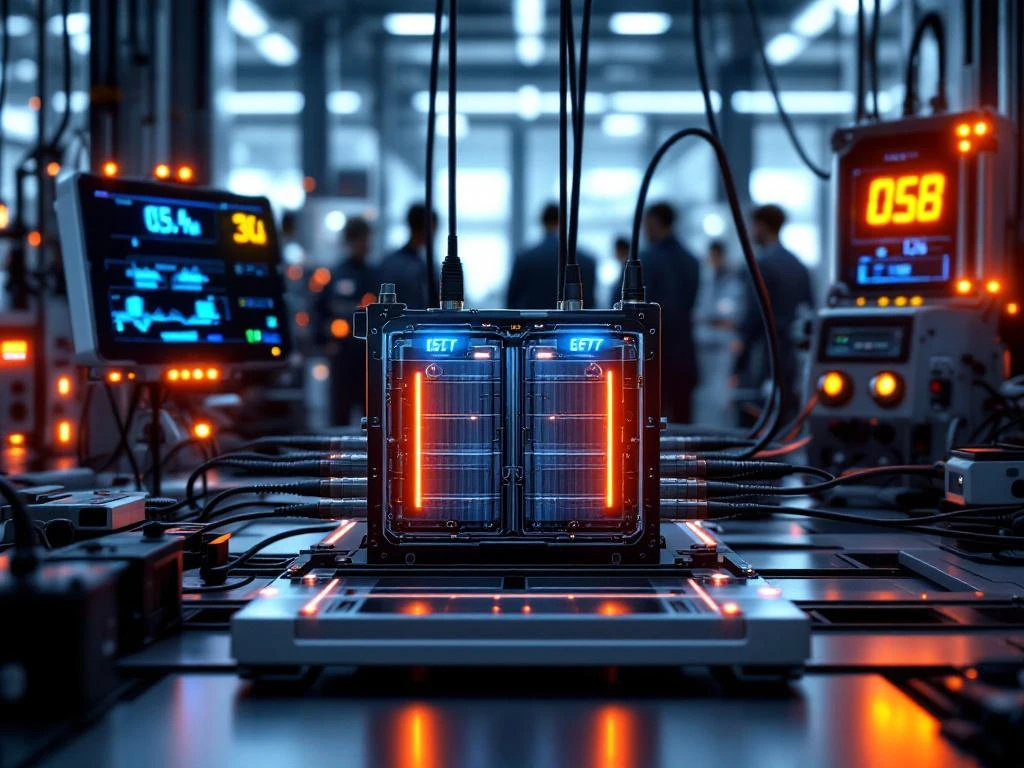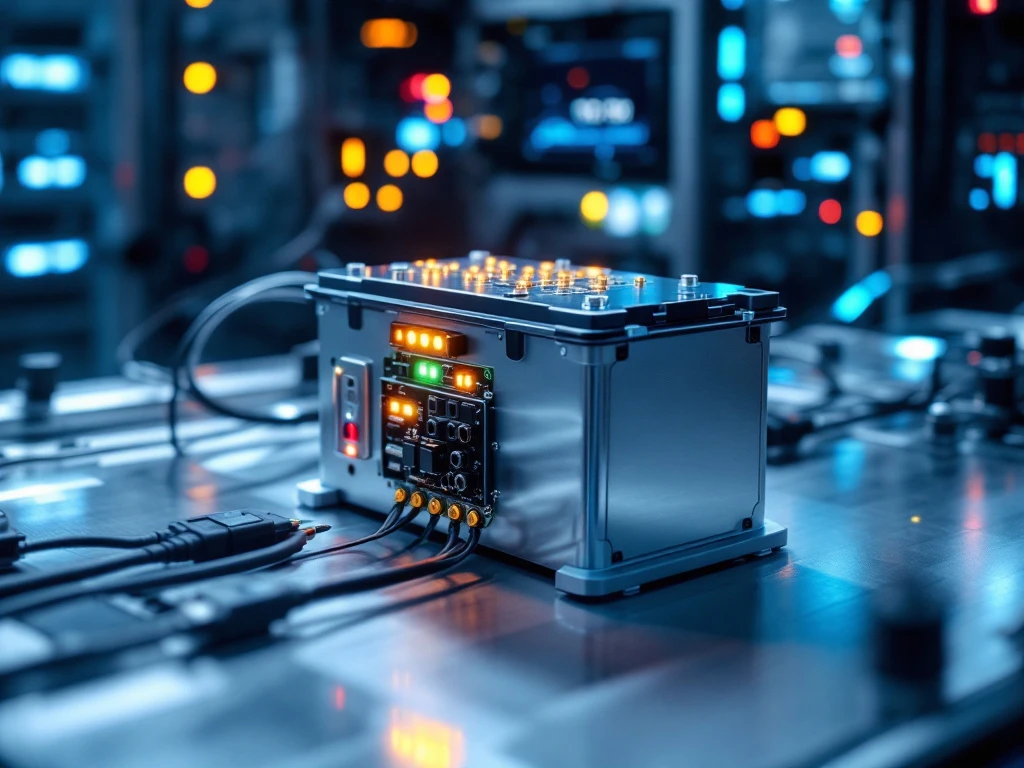Industrial fleets are rapidly shifting toward electrification, creating unprecedented demand for flexible energy solutions. Traditional fixed-capacity battery systems can’t keep pace with the evolving needs of modern operations, where seasonal demands, route changes, and equipment modifications require adaptable power solutions. Scalable battery systems offer the flexibility that fleet operators need to optimise their operations whilst managing costs effectively. These modular energy storage solutions provide the foundation for sustainable fleet electrification across diverse industrial applications.
1. Flexible capacity adjustment for changing operational needs
Scalable battery systems revolutionise how fleet operators manage their energy requirements by allowing real-time capacity adjustments. Unlike traditional fixed systems, modular designs enable you to add or remove battery modules based on your operational demands without replacing the entire system.
This flexibility proves invaluable when your fleet faces seasonal variations, such as increased delivery demands during peak periods or reduced capacity requirements during quieter months. You can easily reconfigure your battery setup to match route changes, equipment modifications, or shifts in operational priorities.
Whether you’re operating a heavy equipment battery pack for construction machinery or managing a diverse fleet of commercial vehicles, the ability to scale capacity up or down ensures optimal energy allocation across your operations. This adaptability extends to new battery technology for electric applications, where evolving power requirements can be met through simple module additions rather than complete system overhauls.
2. Lower initial investment with gradual expansion options
Modular battery systems significantly reduce the financial barriers to fleet electrification by allowing you to start with smaller configurations and expand over time. This approach spreads your capital investment across multiple operational phases rather than requiring substantial upfront expenditure.
You can begin with a basic configuration that meets your immediate needs, then gradually add modules as your operations grow or as budget allows. This phased approach makes electrification accessible to businesses of all sizes, from small operators to large industrial fleets.
The modular approach also reduces financial risk by allowing you to test and validate battery performance in your specific applications before committing to full-scale deployment. Whether implementing a maritime battery pack for vessel operations or electrifying ground-based equipment, this gradual expansion strategy ensures optimal return on investment whilst maintaining operational continuity.
3. Simplified maintenance and component replacement
Modular battery design transforms maintenance from a complex, system-wide operation into targeted, component-specific servicing. Individual modules can be serviced, repaired, or replaced without shutting down your entire fleet, minimising operational disruptions and maintaining productivity.
This approach enables you to develop targeted maintenance schedules based on actual module performance rather than arbitrary timelines. You can identify and address issues at the component level, preventing small problems from escalating into major system failures.
The standardised nature of modular components also simplifies training for your maintenance teams. Technicians only need to master one module design rather than multiple different systems, improving service quality and reducing the likelihood of maintenance errors. This streamlined approach proves particularly valuable for complex applications like heavy equipment battery pack maintenance, where downtime costs can be substantial.
4. Enhanced system reliability through redundancy
Multiple battery modules create inherent backup power capabilities within your system, ensuring continued operation even when individual components require attention. This redundancy provides peace of mind and operational security that single-unit systems simply cannot match.
When one module experiences issues or requires maintenance, the remaining modules continue providing power to your fleet. This distributed approach to energy storage means that partial system failures don’t result in complete operational shutdowns.
The reliability benefits extend beyond simple backup power. Modular systems can be configured with intentional overcapacity, allowing you to maintain full operational capability even during scheduled maintenance periods. This redundancy proves essential for mission-critical applications, including maritime battery pack installations where system failure could compromise vessel safety.
5. Optimised energy efficiency across different applications
Scalable systems excel at matching specific energy requirements for different vehicles and equipment types within your fleet. Rather than using oversized batteries for smaller applications or underpowered systems for demanding tasks, you can configure each installation for optimal efficiency.
This targeted approach maximises battery life by preventing overcharging and deep discharge cycles that can damage traditional fixed-capacity systems. Each application receives precisely the energy storage capacity it requires, improving overall fleet efficiency.
The flexibility extends to accommodating new battery technology for electric applications as it becomes available. You can integrate advanced modules alongside existing ones, creating hybrid configurations that optimise performance across your entire fleet whilst maintaining compatibility with established systems.
6. Future-proofing against technological advances
Modular architecture provides exceptional technology integration capabilities, allowing you to incorporate newer battery technologies and components as they become available. This approach protects your long-term investment value by preventing technological obsolescence.
Rather than replacing entire systems when better technology emerges, you can selectively upgrade individual modules or add new components that enhance overall performance. This evolutionary approach to fleet electrification ensures your systems remain current with industry developments.
The modular design also accommodates emerging standards and protocols in battery management systems, charging infrastructure, and safety requirements. Your investment remains relevant and compliant as regulations and industry standards evolve, providing long-term value protection.
7. Streamlined inventory management and spare parts
Standardised modular components dramatically simplify inventory complexity whilst enabling bulk purchasing advantages. Instead of maintaining diverse spare parts for multiple different systems, you can focus on standardised modules that serve your entire fleet.
This standardisation reduces storage requirements, simplifies parts ordering, and enables volume discounts through bulk purchasing. Your maintenance teams benefit from simplified inventory management, reducing the likelihood of stockouts or excessive inventory carrying costs.
The approach proves particularly valuable for organisations operating diverse fleets with different battery requirements. Whether managing heavy equipment battery pack inventory or maintaining maritime battery pack spare parts, standardised modules create efficiency gains across your entire operation.
8. Ideal solution for mixed fleet operations
Modular battery systems excel in environments where multiple vehicle types and applications operate within a single fleet. The same standardised components can serve light commercial vehicles, heavy industrial equipment, and specialised machinery through different configuration approaches.
This versatility eliminates the need for multiple different battery systems, reducing training requirements, maintenance complexity, and inventory management challenges. Your teams can become expert in one modular system rather than managing multiple different technologies.
The standardised approach also simplifies fleet expansion and equipment changes. New vehicles or equipment can be integrated using existing battery modules, reducing procurement time and ensuring compatibility with established maintenance procedures and charging infrastructure. These advantages become even more pronounced when implementing equipment efficiency improvements across diverse fleet applications.
9. Reduced total cost of ownership over system lifetime
The comprehensive cost benefits of scalable battery systems extend far beyond initial purchase price, delivering substantial long-term savings through reduced replacement costs, extended system life, and improved operational efficiency.
Modular upgrades cost significantly less than complete system replacements, allowing you to maintain current technology without major capital expenditure. The ability to replace individual components rather than entire systems extends overall system life and reduces waste.
Operational efficiency improvements through optimised energy allocation, reduced maintenance downtime, and simplified fleet management create ongoing cost savings that compound over time. These benefits make scalable systems an intelligent long-term investment for any industrial fleet considering electrification.
Making the switch to scalable battery technology
Scalable battery systems represent a fundamental shift in how industrial fleets approach electrification, offering flexibility, reliability, and cost-effectiveness that traditional fixed systems simply cannot match. The modular approach addresses the real-world challenges of fleet operations whilst providing a clear path toward sustainable electrification.
The benefits extend across every aspect of fleet management, from reduced initial investment and simplified maintenance to enhanced reliability and future-proofing capabilities. Whether you’re operating heavy equipment, managing a maritime fleet, or running mixed commercial operations, scalable battery technology provides the foundation for successful electrification.
Evaluating your readiness for scalable battery implementation involves assessing your current fleet composition, operational patterns, and growth plans. The modular approach accommodates diverse requirements and allows for gradual implementation that aligns with your operational and financial objectives. If you’re ready to explore how scalable battery systems can transform your fleet operations, we’d be happy to discuss your specific requirements and help you develop an optimal electrification strategy. Please contact us to learn more about our custom modular energy storage solutions.


